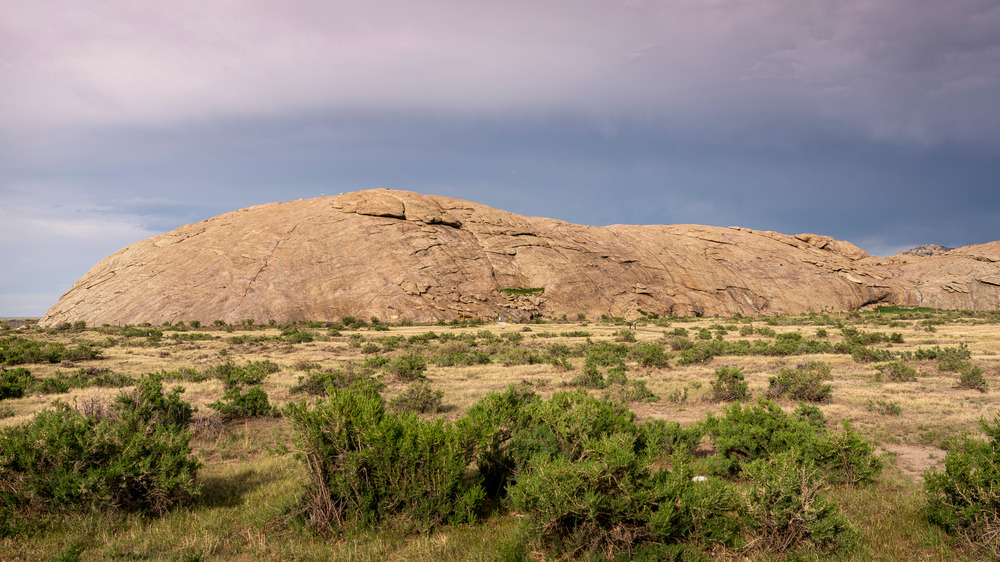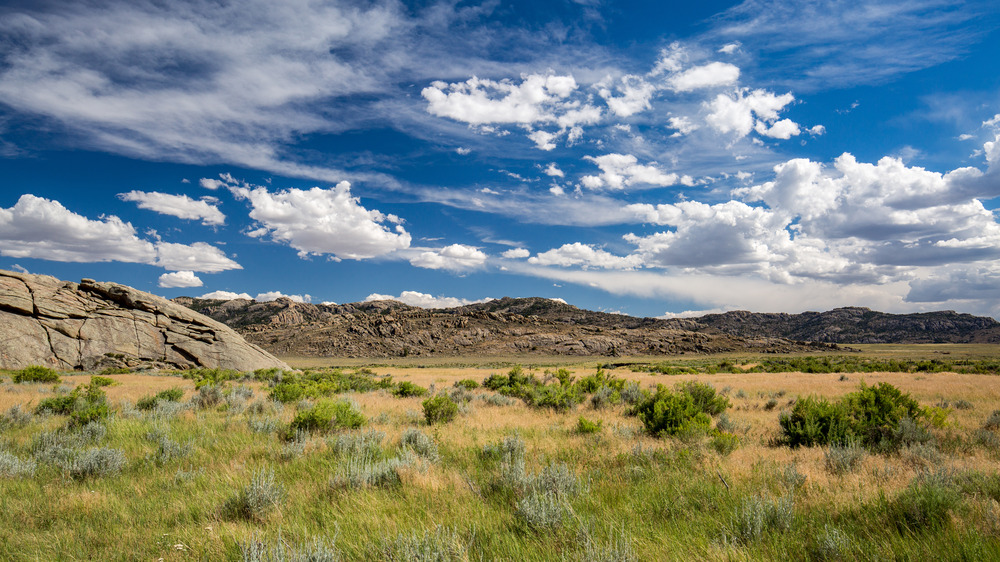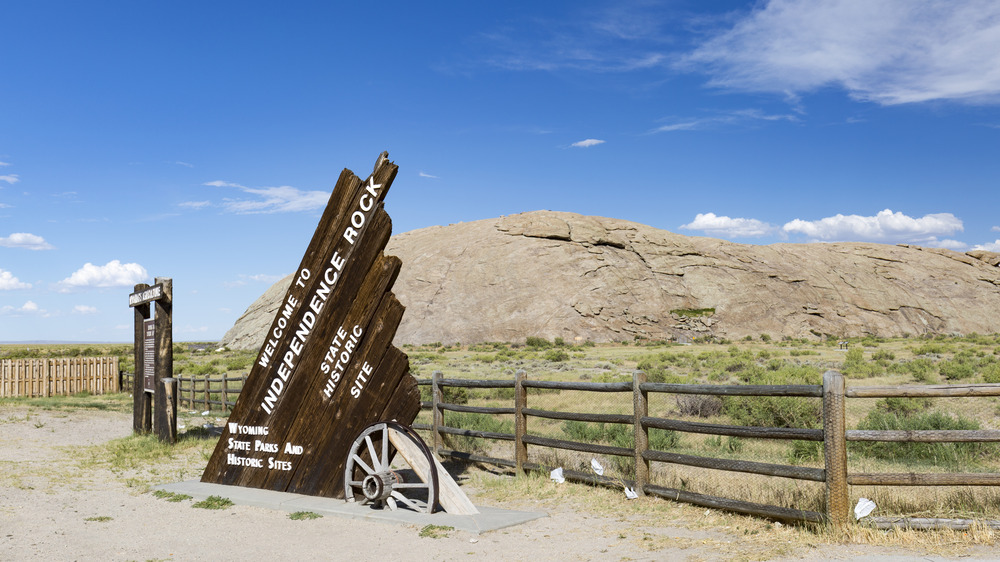Why Independence Rock Was Such An Important Landmark On The Oregon Trail
Oregon Trail is more than a video game; it's an actual historical route that marks the United States' westward expansion. You can still see (and travel through) most of the routes the settlers used to reach states like California, Utah, and Oregon.
One of the landmarks along the Oregon Trail is Independence Rock in Wyoming. The rock is considered the halfway point for many travelers. According to the National Parks Service, Independence Rock got its name from fur trappers who camped below it on July 4, 1830.
Independence Rock covers about 27 acres and is 1,900 feet long, 700 feet wide, and 136 feet high. And all around it, you can see carved names of the people who undertook the long and often dangerous journey to the Western Coast of the United States. So many people breathed a sigh of relief when they saw the rock looming in the distance that they wanted to make their mark on it.
Made of granite, Independence Rock spreads across the Sweetwater Valley. The Wyoming State Historical Society said it was part of the Granite Range that the wind eroded and rounded out over millions of years. Native American tribes including the Arapaho, Blackfeet, Cheyenne, Crow, Kiowa, Pawnee, Ute, and more, often visited the rock and left their carvings before the settlers even caught wind of it. Many of these earlier inscriptions have since faded, so the oldest remaining carving is from 1824, but even this has begun to smooth out, too.
It was the halfway point for many settlers
The landmark represented something very important to the settlers. Not only was it halfway through their journey, but if they reached it by July 4, many knew that they would make it to their destination before the weather turned too cold and heavy snowfall trapped them. It was, as History explained, a marker to say they were "on schedule." The massive rock also earned the nickname "Great Register of the Desert" for the number of names carved into the landmark.
The best months to start the journey through the Oregon trail (and the California and Mormon trails) was April or May so that not only would there be lots of fresh spring grass for the livestock they depended on for the journey, but also so they could beat the harsh winter to their destinations — though there were thunderstorms to contend with. But once they made it to Independence Rock, The Wyoming State Historical Society noted many travelers would whoop with joy and celebrate July 4th with gusto at the rock. One settler, Martha Hecox, wrote that while they didn't have fireworks, they sang patriotic songs and had a picnic lunch.
The spot was a reprieve as well as a source of hope for the rest of the journey. From Independence Rock, the pioneers continued west over the Rocky Mountains to Fort Hall, a trading post in Utah, then onward over Oregon's Blue Mountains – difficult terrain but the last mountain range the weary travelers would need to traverse on their journey. Then they followed the Columbia River to known settlements in Oregon or continued south to California.
Independence Rock is still a rest stop
It's estimated that almost half a million people passed by Independence Rock over the course of about 30 years, during the heyday of Western expansion, according to the Wyoming State Historical Society. Of these, thousands carved their name or a message onto the rock. Some also painted their inscriptions using axle grease or paint, but the years have erased most of these. The arrival of trains going west eliminated the need to trek through the Oregon trail and, with it, the importance of Independence Rock as a marker in their journey.
Independence Rock was designated a National Historic Landmark in 1961, per the National Parks Service. It now has a footpath surrounding the rock. Several exhibits tell the story of the trails and the people that undertook the dangerous journey west. You can even see visible ruts on the ground that were made as the wagons passed through, and of course, the inscriptions the settlers left behind.
Visitors can also hike up Independence Rock, though the Parks Service asks people to avoid stepping on the oldest inscriptions since these are already fading. And since it's located in a state-run rest stop, people can picnic in the area. While cars are far faster than covered wagons, and most people stopping are there to be tourists, it's nice to know Independence Rock still makes travelers sigh with relief. After all, it's still an important landmark.


